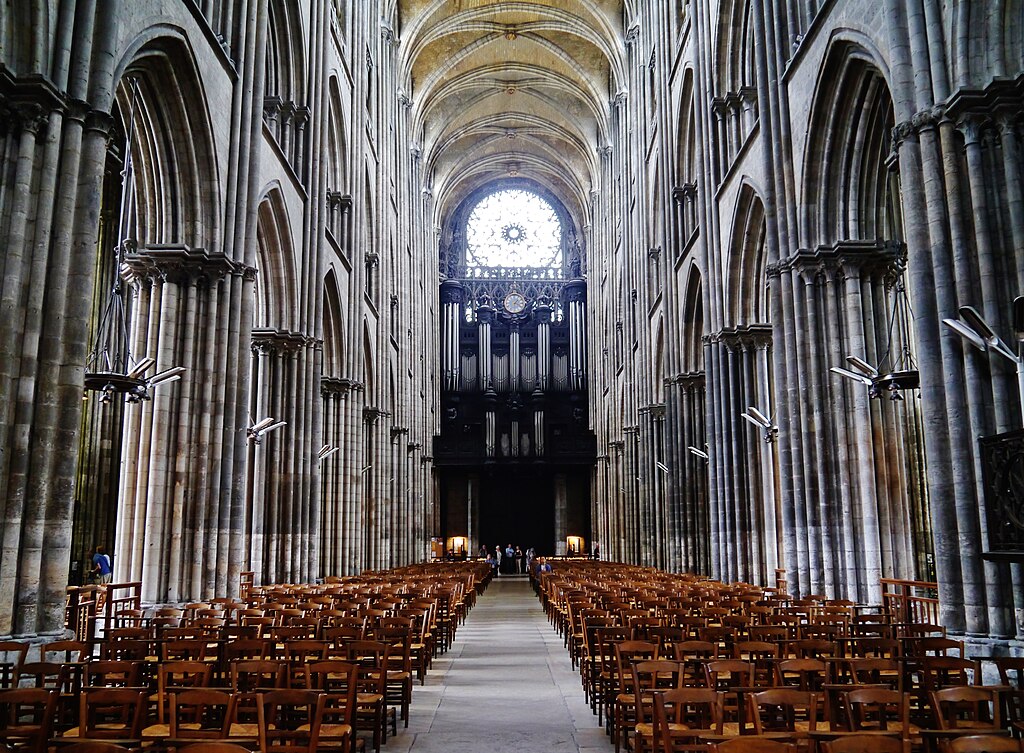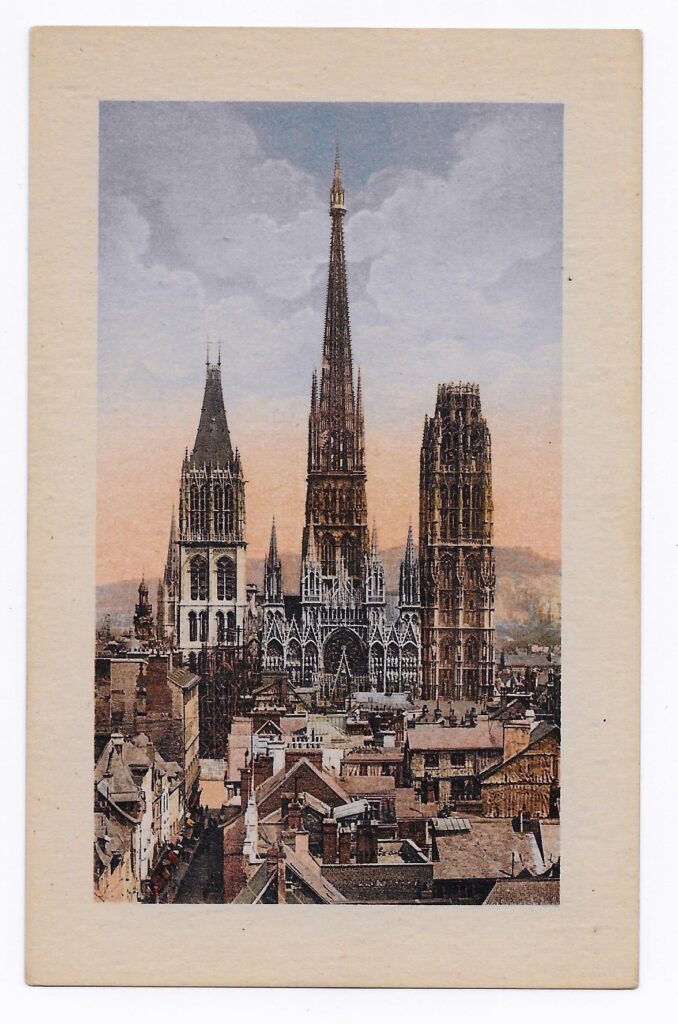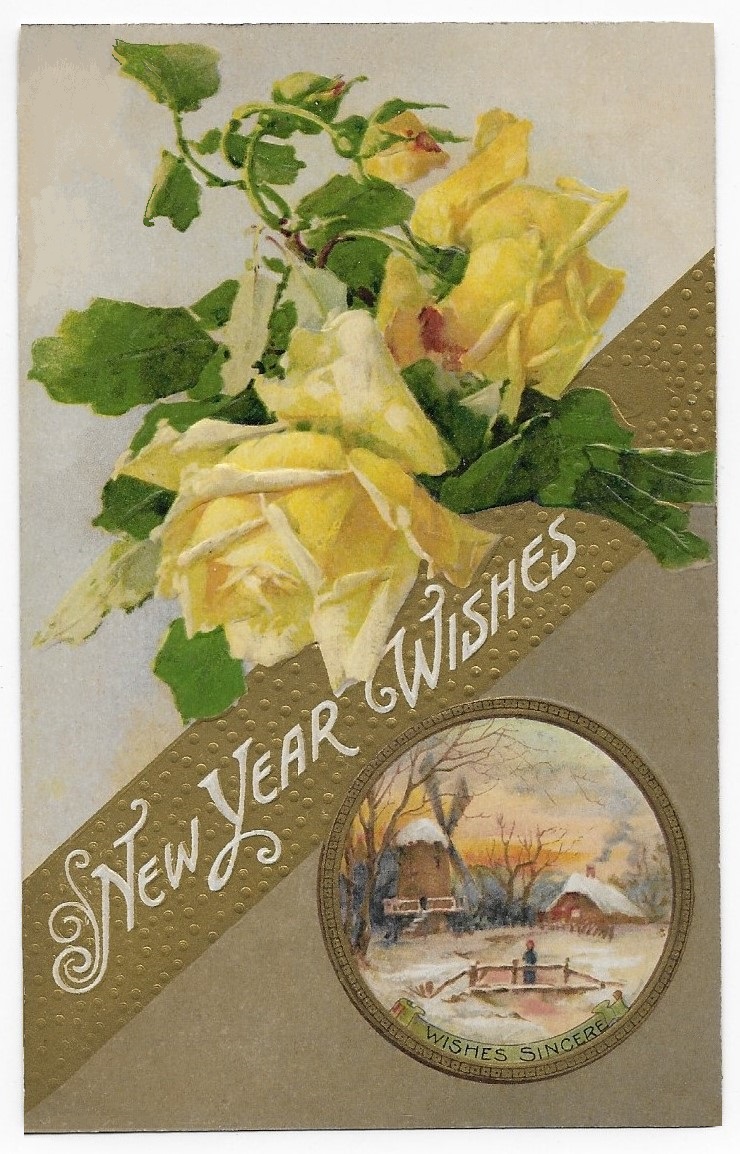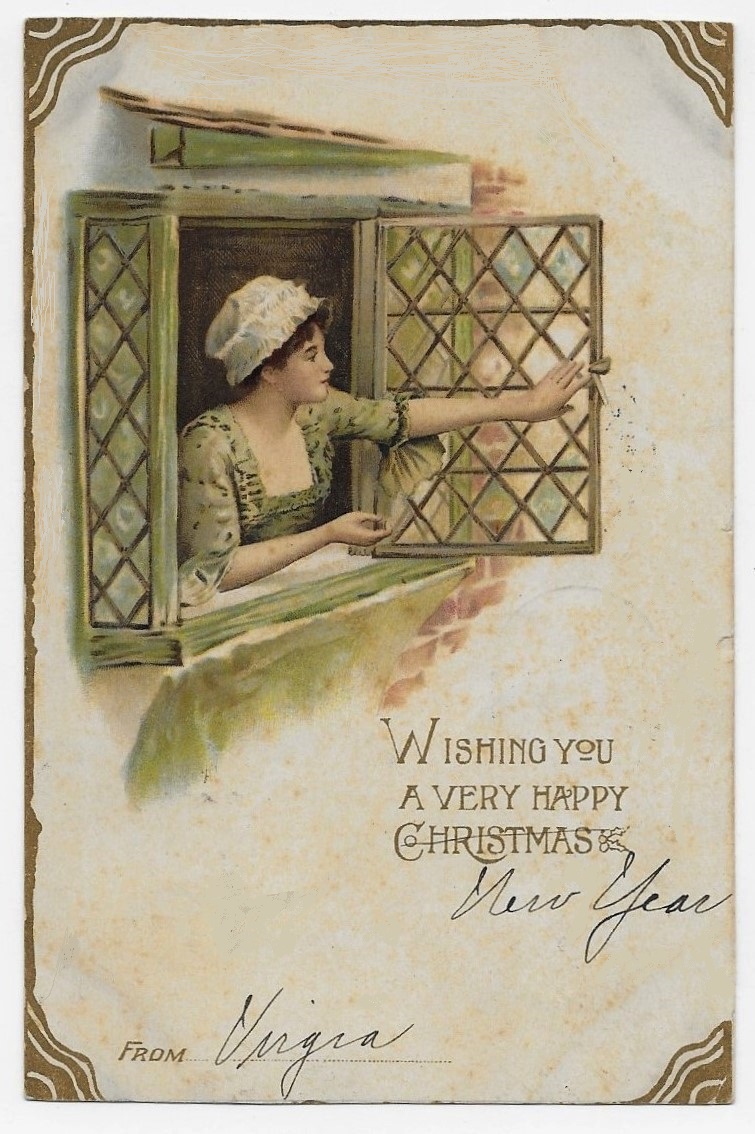This postcard was not mailed; there is no personal story attached to it.
The image has importance to me, however, because I visited this awe-inspiring structure while wandering around Europe in my impressionable youth.
+ + + + + + + + +
The late medieval period saw the construction of hundreds of great churches across Europe.
https://en.wikipedia.org/wiki/Construction_of_Gothic_cathedrals
One could devote an entire academic career to studying the competing impulses of piety, pride, competition, and devotion which motivated and sustained this glorious enterprise.
In purely secular terms, cathedral building was a powerful engine of technological development and a catalyst for businesses related to pilgrimage or tourism.
https://www.durhamworldheritagesite.com/learn/architecture/cathedral/construction
Notre Dame de l’Assomption de Rouen, as it stands today, is known for the three towers that display features of the evolution of cathedral building from Early Gothic to Flamboyant, and Renaissance styles.
+ + + + + + + +
A Christian community existed in Rouen since the mid-3rdh century, and the present cathedral is a succession of earlier structures.
An early Basilica was, over centuries, surrounded by a Chapter House and gardens, an Archbishop’s palace – and was enlarged several times.
Charlemagne visited the cathedral in 769, decades before his coronation as the first Holy Roman Emperor.
Alas, Viking raids destroyed many parts of the early cathedral.
In 915, Viking leader Rollo became the first Duke of Normandy upon his baptism in the Cathedral – you can visit his tomb there today.
A century later, almost all of the previous building was subsumed in a new Romanesque structure.
William, Duke of Normandy, was present for the consecration of this new cathedral in 1063 – three years before he claimed the English throne and launched an invasion to became the first Norman King of England.
In 1144, the Basilica of Saint Denis was consecrated near Paris, the first Gothic structure in France.
The Archbishop of Rouen was present for that ceremony, and determined to erect such a magnificent, light-filled cathedral in Rouen.
That was the beginning of the Cathedral we see in Rouen today.
https://en.wikipedia.org/wiki/Rouen_Cathedral
+ + + + + + + + +
A postcard story that touches on all the cultural movements, architectural innovations, and historical events relating to the Cathedral of Rouen will exhaust even the most devoted reader.
https://upload.wikimedia.org/wikipedia/commons/d/d2/Une_vue_de_Rouen_en_1526.JPG
The saga of St. Joan of Arc, the destructive religious wars of the 16th century, the entombment of French nobles, the push to raise the tower to be the tallest structure in Europe (between 1876 and 1880), the magnificent organ, the chapels of the city’s guilds and corporations, and the “Butter Tower” financed with payments of dispensations to eat butter during Lent – are, with many other peculiarities, worthy of attention.
The cathedral suffered significant damage in World War II, and has undergone periods of repair and strengthening since that time.

+ + + + + + + +
I believe that this postcard, printed and published in France by a Parisian firm. was sold as a souvenir circa 1910.
Postcards of this type abounded in the early decades of the 20th century, and were available as faux-vintage reproductions in the last decades of that century.






